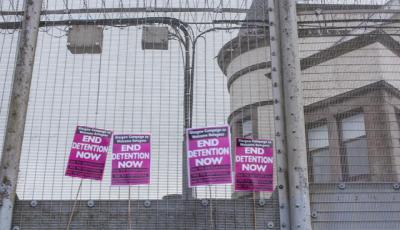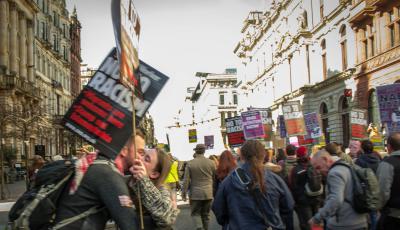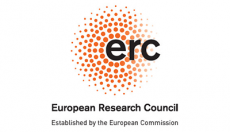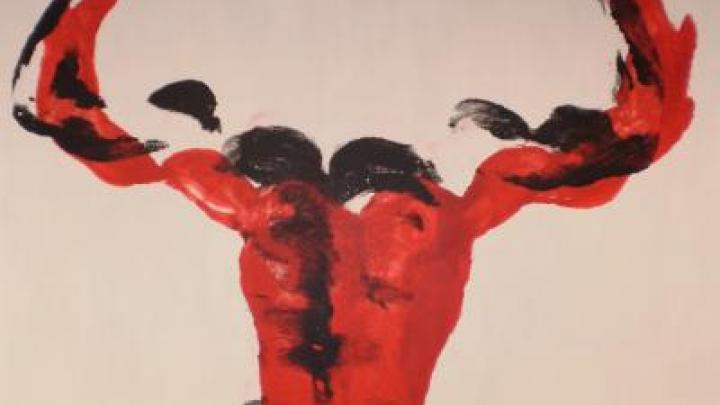Volunteer Visiting in Scotland
Posted
Time to read
Guest post by David Johnstone, a volunteer visitor Scottish Detainee Visitors. SDV supports the men and women detained in Dungavel IRC, near Strathaven in Lanarkshire. Find out more at www.sdv.org.uk. Τhis post is the second installment of the Border Criminologies Themed Week on Volunteer Visiting in the Hostile Environemnt organised by Ali McGinley.
Stalked by trees along disorientating roads, one might be forgiven for believing they were firmly fixed into the opening scene of Stanley Kubrick’s The Shining when approaching Scotland’s only Immigration Removal Centre (IRC). Hidden some 31 miles from Glasgow City Centre, tucked tight away from the public eye, we confront the barbed wire, the tall steel fences, the cage, the prison.
As a volunteer visitor for the Scottish Detainee Visitors group, I’m part of a collective providing emotional, social, and (where possible) practical support to individuals detained in Dungavel IRC, in Strathaven, Lanarkshire. Dungavel IRC is one of ten such centres currently functioning across the UK. Historically a former hunting lodge and prison, and showing no sign of change, it has detained some 1,322 persons over the course of the past year to June 2015 alone. The centre holds 249 male and female detainees at any one time. As a visible marker, you soon learn that the centre itself hides a deeper malaise. Those detained often experience psychological and traumatic effects, not always a direct result of detention itself, but as a cumulative impact of being in custody, of being in limbo in an ambiguous legal situation, and of being subject to indefinite detention and the powerlessness which results.

While hunger strikes or talk of suicidal thoughts do manifest, they often act as a mode of political agency and resistance against the repression faced in detention, a method of expressing Individual autonomy within the detention structure and in the space of incarceration. For example, the threat of removal to another detention centre hangs over individuals at all times, as does the threat of removal. An additional element of this for us at Scottish Detainee Visitors is the existing legal differences between Scottish and English immigration practices for individuals in detention. This poses serious question marks over the fair access to the use of legal advice when challenging removal orders.
After the recent UK general election, sentiment in Scotland toward the detention regime―and Dungavel in particular―has largely been one that’s mirrored on both a sub-national political and street level, and shared by practitioners of protection who’ve condemned the systematic use of detention. The high release rate of persons detained in Dungavel substantiates the concerns of Scottish civil society. That only 25% of persons held at Dungavel were issued removal orders in comparison to 49% of the detention estate as a whole questions the rationale for detention in the first place. The UK court’s decision to deny the government’s attempt to re-instate the Detained Fast-Track process should similarly rejuvenate individuals’ pursuit to challenge detention as inefficient and unjust.
The UK government has expanded the hostile environment by externalising immigration controls and procuring the consent of professionals and civil society at large to partake in the monitoring and surveillance of detainees. One example of this trend is the re-emergence of dawn raids being used as an acceptable practice politicised before the media and led by the British Prime Minister himself.
Such methods are not simply tactical, but are also strategic. Targeting migrants not only reinforces their position as a potential societal risk, but works to support the expansion and proliferation of mechanisms of surveillance , linking to national security concerns, and furthering the use of the detention estate. It is within this context that I volunteer as a visitor at Dungavel IRC. As visitors, we often confront sensitive disclosures, and must exercise confidentiality in these visits. In addition, we provide signposting advice and guidance on an individual’s situation. We can also intervene to aid communication with solicitors, collect peoples’ belongings, or source clothes.
However, it’s visitor space, and the sharing of personal memories in discussion of the everyday experiences between visitors and individuals in detention, that brings these communities together. The sharing of the everyday monotony of life experiences and our common struggles epitomises the inter-dependency of all lives. The remembering and sharing of past stories, moments of personal joy, or one’s role as the local cricket star, and being receptive to the enthusiasms of a passionate hairdresser or cook, re-humanises individuals along common lines of identification, helping to promote political inclusivity regardless of country of origin.

By recognising the complexities of the lives faced by individuals in detention, visitors can contribute to awareness raising on immigration detention. We work to empower those detained, to give them autonomy and agency, and are careful not to simply fall back on discourses of vulnerability, risk, and victimhood. As visitors we also produce a politics of exposure, something I contend appropriates the violent space of detention and attempts to re-humanise those held. As such, visitors can, if only for a short moment, produce a hospitable space of acceptance and belonging. This leaves its own legacies because both visitors and individuals in detention often feel empowered in their resolution, making the role of the visitor an important point of contact for individuals in detention to the outside world. The visitors’ role, I believe, re-orients the current conditions under which individuals are interned, away from the isolation to encourage forms of interdependency, persistence, resistance, resilience, and equality.
In a broader sense, volunteer visiting, when combined with other forms of involvement in civil society and with practitioners of protection, activists, and solidarity networks, gives cause for optimism and is a counter discourse to the current hostile environment. In particular, Scottish civil society seeks to make visible the injustices of detention and attempts to procure more inclusive modes of acceptance, including the realisation of alternatives to detention, notwithstanding the end of detention itself in Scotland, and to see the UK make good upon its global responsibilities to those who are migrating. In this context, visitors in detention provide a vital function to opening up and fostering a space of acceptance and creating a more hospital external environment.
Any comments about this post? Get in touch with us! Send us an email, or post a comment here or on Facebook. You can also tweet us.
__________
How to cite this blog post (Harvard style)
Johnstone, D. (2015) Volunteer Visiting in Scotland. Available at: https://www.law.ox.ac.uk/research-subject-groups/centre-criminology/centreborder-criminologies/blog/2015/10/volunteer-0 (Accessed [date]).
Share
YOU MAY ALSO BE INTERESTED IN
With the support of









